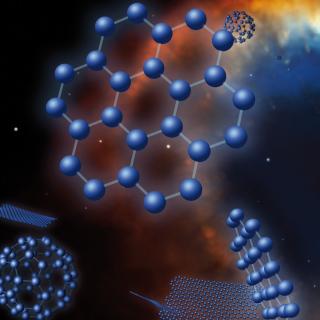Bibcode
Gómez-Muñoz, M. A.; Manchado, A.; Bianchi, L.; Manteiga, M.; Vázquez, R.
Referencia bibliográfica
The Astrophysical Journal
Fecha de publicación:
11
2019
Revista
Número de citas
5
Número de citas referidas
5
Descripción
We present an analysis of the binary central star of the planetary nebula NGC 2346 based on archival data from the International Ultraviolet Explorer, and new low- and high-resolution optical spectra (3700-7300 Å). By including in the spectral analysis the contribution of both stellar and nebular continuum, we reconciled long-time discrepant UV and optical diagnostics and derive E(B-V) = 0.18 ± 0.01. We reclassified the companion star as A5IV by analyzing the wings of the Balmer absorption lines in the high-resolution (R = 67,000) optical spectra. Using the distance to the nebula of 1400 pc from Gaia DR2, we constructed a photoionization model based on abundances and line intensities derived from the low-resolution optical spectra, and obtained a temperature of T eff = 130,000 K and a luminosity of L = 170 L ☉ for the ionizing star, consistent with the UV continuum. This analysis allows us to better characterize the binary system’s evolution. We conclude that the progenitor star of NGC 2346 has experienced a common envelope phase, in which the companion star has accreted mass and evolved off the main-sequence.
Proyectos relacionados

Nucleosíntesis y procesos moleculares en los últimos estados de la evolución estelar
Las estrellas de masa baja e intermedia (M < 8 masas solares, Ms) representan la mayoría de estrellas en el Cosmos y terminan sus vidas en la Rama Asintótica de las Gigantes (AGB) - justo antes de formar Nebulosas Planetarias (NPs) - cuando experimentan procesos nucleosintéticos y moleculares complejos. Las estrellas AGB son importantes
Domingo Aníbal
García Hernández